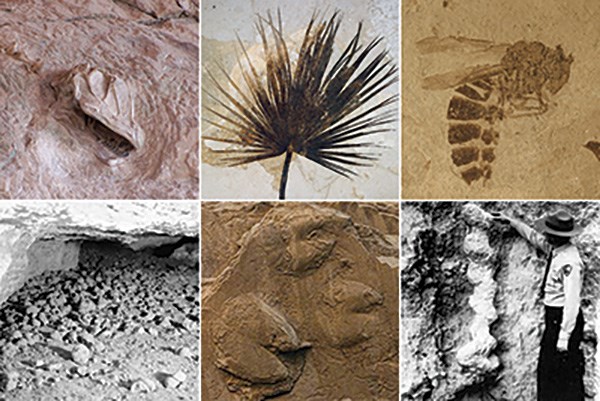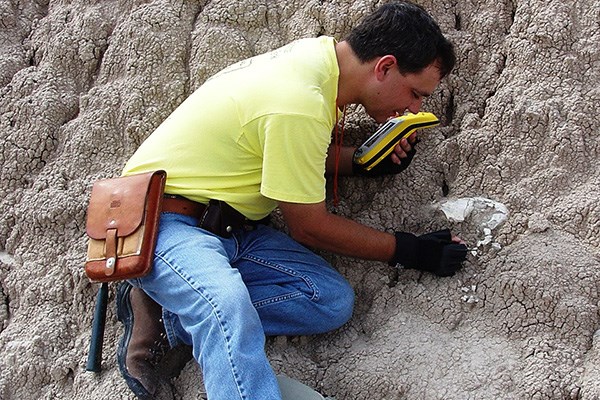
NPS photos. Top row: Dinosaur NM (CO&UT), Fossil Butte NM (WY), Florissant Fossil Beds NM (CO). Bottom row: Grand Canyon NP (AZ), Death Valley NP (CA&NV), Agate Fossil Beds NM (NE). Paleontological resources, or fossils, are any evidence of past life preserved in geologic context. They are a tangible connection to life, landscapes, and climates of the past. They show us how life, landscapes, and climate have changed over time and how living things responded to those changes. Those lessons are particularly important as modern climate continues to change. Evidence of LifeThere are two main types of fossils: body fossils and trace fossils.
As pieces of once living things, body fossils are evidence of what was living where and when. Trace fossils are valuable because they "animate" the ancient animals or plants by recording a moment of an organism's life when it was still alive. 
NPS photo Geologic ContextIdentification and classification of body or trace fossils provides a list of ancient plants and animals that lived in a particular place. But without studying the geologic context —such as precise location, type of rock, specific layer, orientation, and other fossils found nearby—there is no story to go along with the remains. World Class SitesThe fossil record of the national parks includes billions of individual fossils spanning more than a billion years of earth's history. Some fossils are common. Others are one-of-a-kind or found nowhere else on the planet.
|
Last updated: March 1, 2023
